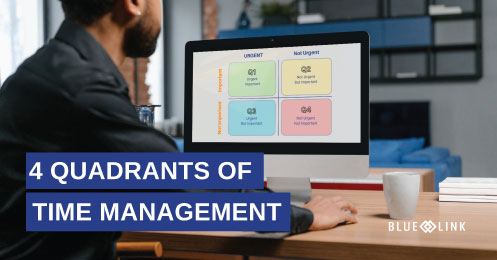When it comes to integrating your eCommerce site with back-end accounting and inventory ERP software, you typically have 4 options:
- No Integration
- Simple Integration with Batch Updates
- Sophisticated Real-Time Integration
- B2B eCommerce – Online Order Portal
One of the biggest mistakes companies make when deciding to implement eCommerce is not considering the implications for their back-end processes. This is especially true for companies engaged in industries that historically stayed away from online sales channels, including wholesale distribution companies. However, as more and more of these types of businesses branch out into distributing their products online, it’s important to consider the implications on back-end processes. In this situation, although you have added a new sales channel, your back-end processes will remain the same - you must still manage the inventory required to fulfil these orders and process sales into an accounting system. This is where you need to start looking at options for integrating your eCommerce online storefront and back-end accounting ERP system. Before you decide on the best approach for integration, consider the following:
- How many orders do you expect to receive online each day?
- Do you have dedicated staff for managing orders and picking, packing and shipping?
- Should anyone be able to purchase from your eCommerce store, or do you want to restrict which customers can?
- Do you also sell through other eCommerce channels (such as Amazon or eBay)?
- Do you have different pricing for different customers?
Answering these questions and others is important to determine exactly how sophisticated the ERP eCommerce integration needs to be, which type of eCommerce store is best suited for your business, and how much it will all cost. Below we outline some of the options for integration.
Option 1: No Integration
The first and simplest approach is a site with no integration and is best suited for small companies with a low volume of daily orders. An example is a website that allows customers to view products and place orders, but all inventory levels must be manually updated within the site’s interface and all sales orders are manually downloaded from the site and re-entered into an accounting system. This option is best for very small companies who want to give customers access to product information online, but only manage a small number of orders each day and so manual process are appropriate.
Option 2: Simple Integration with Batch Updates
The second option is a site set-up with only one-way integration and batch updates, which can be set up automatically or done manually. This means that a user has to batch update the website and any back-end systems on a regular basis, for example, once a day. Users pull any orders placed online into the back-end system which creates a sales order and allocates the inventory. In addition, any new product that comes into the warehouse gets entered into the back-end system and then batch pushed up to the online store. This option allows users to batch pull and push information between systems, thus eliminating duplicate entry and data entry errors; however, without true real-time integration, businesses can be left with inventory discrepancies when customers place orders through other sales channels. Once again, this method is therefore also best suited for companies with a low daily order volume.
Option 3: Sophisticated Real-Time Integration
The third and most complex level is although the most expensive, it also provides the greatest opportunity for automation and is best suited for larger online retailers. This level of integration automates several steps and is truly real-time. Software automatically crawls a website for any new orders, which get pulled into the back-end system in real-time (or near real-time), creating a sales order and updating inventory information. When any new product comes into the warehouse and gets put into the system the same process applies - information is pushed up to the website, including product descriptions and pricing. Users can schedule this automatic pushing and pulling of information to happen at regular, pre-determined intervals throughout the day – for example, every 3 minutes. This level of integration is best suited for companies that receive dozens or hundreds of online orders per day. Website and back-end inventory and product information are always up-to-date, and manual processes associated with re-entering data are eliminated.
Option 4: B2B eCommerce – Online Order Portal
The last option, an online order portal, is geared more towards B2B type companies, requiring each customer to have their own unique login. This type of site is strictly designed to streamline the order entry process and the website is not built for SEO or marketing purposes. Because of this, these types of online order portals are often linked to from an existing company website so that new customers can easily find a business online and existing customers can place orders. Requiring a unique login means that customers must arrange to create an account before ordering a product, which gives the company more control over who they sell to. Once logged in, customers can view available inventory with product images, review previous orders and sales history, see specific pricing information and place an order. Inventory is then allocated in the back end and a sales order gets created with all the information updating in real-time. Because each customer must login to place an order, this gives the company flexibility in terms of setting up different pricing for customers and what products are available.
Even simple integration with batch updates can provide your business with many benefits when first getting started selling online. Then, as your business grows, consider your options for scaling your ecommerce sales and setting up more sophisticated, real-time integration. There are many benefits to having an eCommerce system that is integrated with ERP software including those listed below.
Benefits of eCommerce and Accounting Inventory Software Integration:
- As orders come in from your eCommerce site inventory levels are tracked and updated automatically and any changes made in an inventory management system will be automatically reflected online.
- An integrated system automatically notifies customers when orders have been shipped from the warehouse and allows them to track the delivery of products.
- As demand increases during peak times, an automated system will reduce errors and the need for manual workarounds, so that customers receive products on time.
- Applying price changes to inventory is simplified - for example quantity or promotional discounts.
- All business channels including phone, web and retail sales are accounted for in the same system.
- It enables business growth with reduced staff, as customers can purchase products online without staff to handle the processing of more transactions.
- Companies can easily process credit card transactions in a secure way online.
- It includes features to help determine the cheapest shipping method/carriers on each order.










